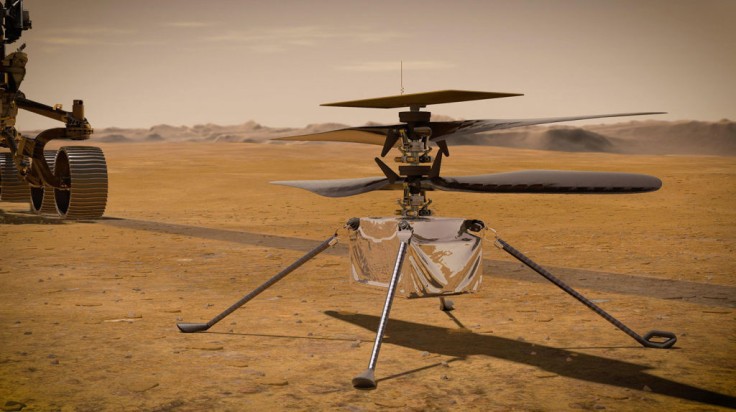When NASA's Mars 2020 Perseverance rover landed on Mars on February 18, 2021, it carried with it the Ingenuity helicopter. It only weighs about 4 pounds or 1.8 kilograms but it was able to accomplish great things.
Ingenuity project began six years prior to its launch. It started as an improbable prospect.
While the engineers at NASA's Jet Propulsion Laboratory in Southern California believed that it was "theoretically possible" to fly in the thin atmosphere of Mars, they do not know if they could create a vehicle powerful enough to fly.
But here comes Ingenuity, a "marvel of engineering" as NASA says. In this article, let's explore the five interesting facts about Ingenuity.

1. Ingenuity is a Flight Test
Ingenuity is considered as a "technology demonstration." It is a project that is after testing a new capability for the first time, as per NASA.
Ingenuity has four specially made carbon-fiber blades. These blades are arranged into two rotors. It is unique for it spin in opposite directions at around 2,400 rpm, which is a lot of times faster than a passenger helicopter.
There is an innovative solar cells, batteries, and other components in Ingenuity. There are no science instruments attached to the helicopter since it is after carrying out a separate mission from the Mars 2020 Perseverance rover.
2. The First Powered, Controlled Flight of Ingenuity on Mars is Not Easy
Ingenuity is made to be light because of the thin atmosphere in Mars. Its rotor blades are much larger and spin much faster.
Mars has cold temperatures. Nights in the Jezero Crater can be as cold as minus 130 degrees Fahrenheit (minus 90 degrees Celsius). These cold temperatures tested the original design of the "off-the-shelf" parts used in Ingenuity, as per SciTechDaily.
Tim Canham, Ingenuity's operations lead at JPL noted that "one of the first things Ingenuity has to do when it gets to Mars is just survived its first night."
Read Also: NASA Temporarily Grounds the Ingenuity Mars Helicopter - But Why?
3. Ingenuity is the First Aircraft to Attempt Controlled Flight on Another Planet
Mars' thin atmosphere makes it difficult for a helicopter to fly because it cannot achieve enough lift. Since the atmosphere on the Red Planet is 99% less dense than Earth's, Ingenuity is built to be light, with larger rotor blades that spin much faster.
The team who worked on the helicopter tested it at Martian temperatures and they believed it should work on Mars as intended. But the bone-chilling temperature at Jezero Crater will push the design limits of many parts of the helicopter, as per NASA.
Moreover, it won't be easy for flight controllers at JPL to control Ingenuity due to communication delays. Thus, Ingenuity will decide on its own how to fly to a waypoint.
4. Ingenuity Relies on the Mars 2020 Perseverance Mission for Safe Passage to Mars
Ingenuity is placed sideways under the belly of the Perseverance rover. Both the rover and the helicopter are safely placed within a clamshell-like spacecraft entry capsule as they travel to Mars, as per SciTechDaily.
Ingenuity rides along with Perseverance as it lands. After shedding the landing cover and configuring the helicopter, the rover's Mars Helicopter Delivery System gently dropped Ingenuity on the Martian surface.
5. Ingenuity is a Fitting Name for a Robot that is the Result of Extreme Creativity
The name Ingenuity was submitted by high school student Vaneeza Rupani of Northport, Alabama for the Mars 2020 rover. But the rover was named Perseverance,
The officials of NASA believes that Ingenuity is terrific name for the helicopter, since the team who worked on the helicopter employed much creative thinking to get the mission off the ground, NASA said.
Related Article: NASA's Ingenuity Helicopter Delivers Incredible Photos of Perseverance Landing Gear









